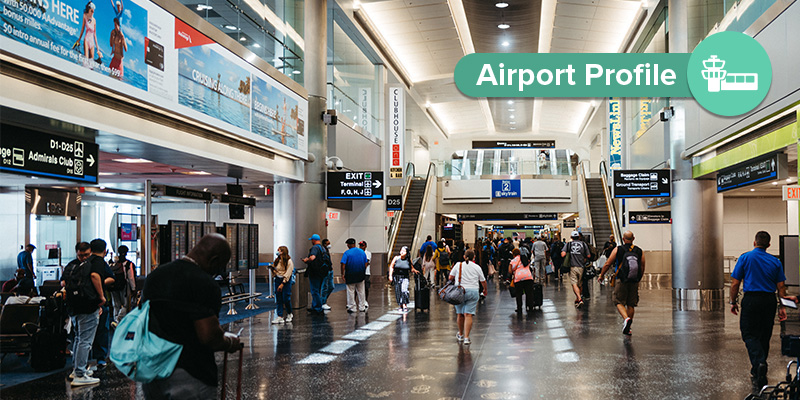Maurice Jenkins, Digital Strategy and Innovation Advisor/Chief Innovation Officer at Miami Dade Aviation Department, provided insights into how Miami International Airport (MIA) views innovation and how technology is changing their operations. This article outlines the following for MIA:
- Innovation background and approach
- Specific innovation projects
- Lessons learned
Innovation Background and Approach
The Mayor of Miami Dade County and the Chief Executive Officer (CEO) of MIA have a shared vision: Find ways to positively transform the airport’s operations by advancing new solutions. Further, since they see MIA as an important piece of the aviation industry as a whole, one of their goals is to deliver widespread value beyond the MIA facility. This has resulted in the creation of an innovation leadership position for the airport: the Innovation Advisor. This individual works hand-in-hand with the CEO to identify new strategies and technologies that will help advance the mission and vision for MIA. On a practical level, this direct reporting relationship enables the Innovation Team to more easily navigate the procurement, legal, and timing challenges that so often arise through innovation efforts.
Jenkins identified several key elements in his approach to the Innovation Program, including the following:
- Prioritize projects
- Eliminate data silos in the organization
- Engage with federal stakeholders such as the Transportation Security Administration and U.S. Customs and Border Protection
- Look for innovations that will enhance the aviation landscape
- Test technologies with startups and universities
The Innovation Team at Miami is not overly concerned with failure in innovation efforts, but rather, the team is focused on challenging the airport to try new things and create new benchmarks for the future. Jenkins and his team understand that although success cannot always be achieved, failures can be seen as learning tools. Their goal is to keep generating creative and potentially transformative ideas; they acknowledge that an innovation program is only as good as its last performance and emphasize the need to keep moving after any success or failure.
Specific Innovation Projects
Jenkins discussed several projects or technologies that his team tested, implemented, or put on their roadmap, all with a focus on collaborating and engaging with the industry and vendors for the best results. The following provides a snapshot of these initiatives:
- Self-service bag drop (with airline community)
- International Organization for Standardization (ISO) 56K Certification
- Private wireless network through Citizens Broadband Radio Service technology—currently finding new uses and benefits
- Virtual queuing—currently has CEO buy-in
- Autonomous vehicles—currently seeking a trial location
Jenkins also stressed that their approach to innovation is not just implementing new technologies; it often means improving the processes and decision making of the organization.
Lessons Learned
Jenkins shared several lessons that his team has learned so far, including the following:
- Prioritize projects—the team started with 3 projects that quickly grew to 17, and they cannot all be done at once.
- Focus on all aspects of the airport, not just technology, for innovation.
- Consider what is going on in the community around the airport.
- Track the procurement cycle to avoid missing a window of opportunity.
- Involve all stakeholders in the industry.
- Develop good relationships with business units to limit obstacles to progress.




